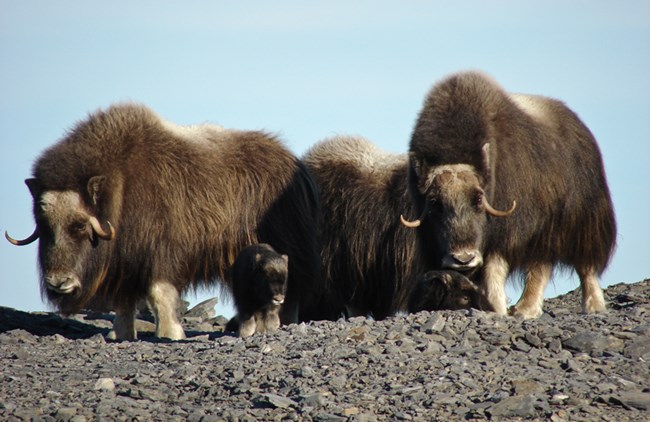
NPS Photo The muskox is unique compared to woolly mammoths, scimitar cats, American lions, and giant short faced bears. It still calls the tundra home, while these other Ice Age animals went extinct. The muskox species living today migrated across the Bering Land Bridge from Europe 200,000-90,000 years ago and found a new home in North America. It survived Ice Age predators by grouping into a circle. When threatened, a muskox herd forms a circle where each individual, and its horns, faces out. Imagine being a predator. Would you attack a "wall" of these horns? The muskox endured the Ice Age's bitter cold by having two layers of fur. Long, weather-resistant guard hairs protect a warm, inner fur known as qiviut. The muskox survived and still calls the tundra home because of these adaptations. It is a living reminder of an ancient world where land, not sea, connected Alaska with Russia. However, the survival story of muskox could not have been penned without the aid of modern men. Muskox survived in the tundra until nearly 100 years ago when they quietly slipped into extinction from northern Alaska, only to be reintroduced in the 1970s. 
"Bearded Ones" - Muskox on the Seaward Peninsula |
Last updated: October 11, 2023
